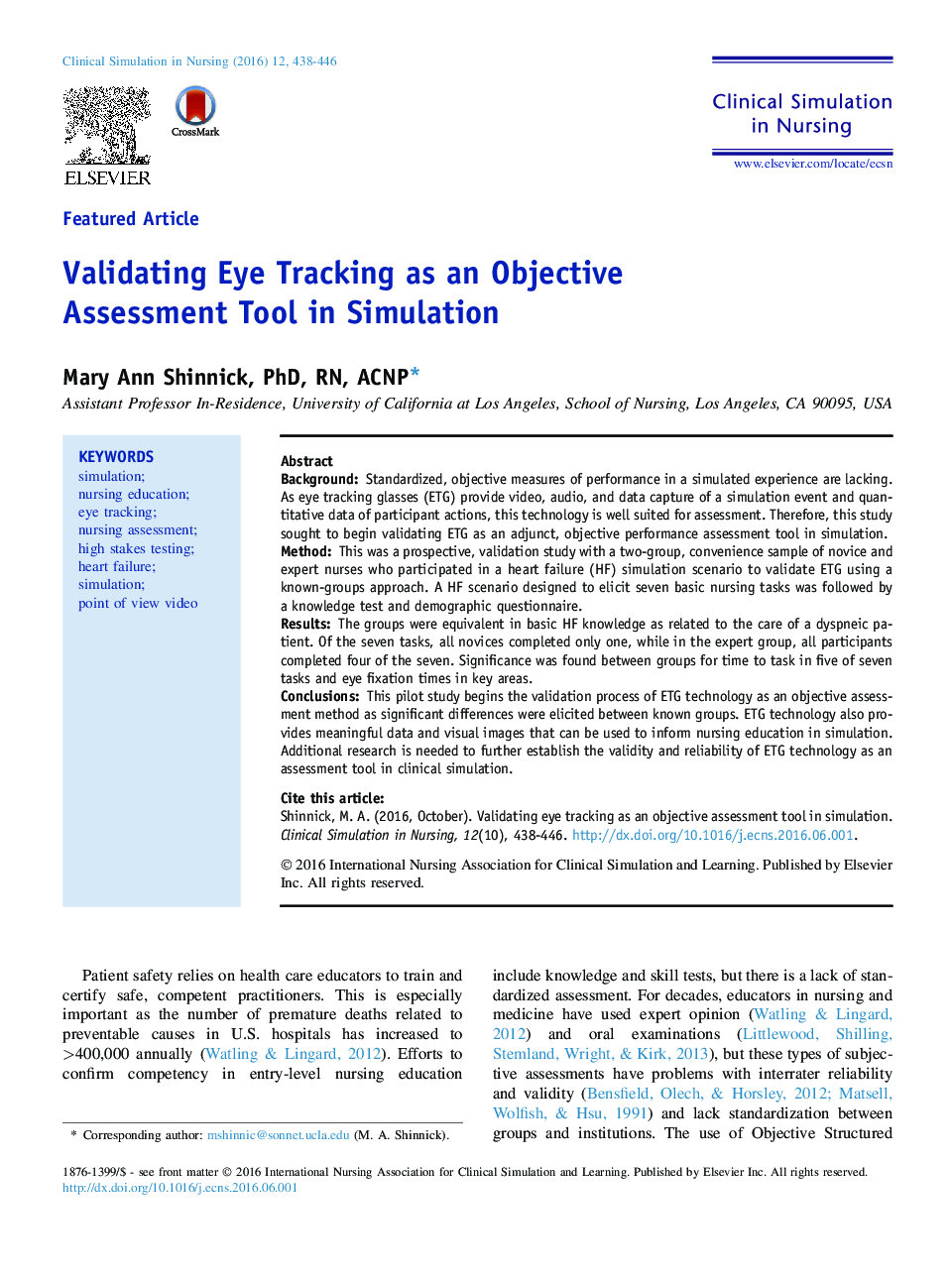| Article ID | Journal | Published Year | Pages | File Type |
|---|---|---|---|---|
| 2645888 | Clinical Simulation in Nursing | 2016 | 9 Pages |
•The test scenario was designed to elicit seven basic nursing tasks•Of the seven expected tasks, only one was completed by 100% of all novices.•The time to task for the novices was slower in all seven expected tasks but was statistically significant in five.
BackgroundStandardized, objective measures of performance in a simulated experience are lacking. As eye tracking glasses (ETG) provide video, audio, and data capture of a simulation event and quantitative data of participant actions, this technology is well suited for assessment. Therefore, this study sought to begin validating ETG as an adjunct, objective performance assessment tool in simulation.MethodThis was a prospective, validation study with a two-group, convenience sample of novice and expert nurses who participated in a heart failure (HF) simulation scenario to validate ETG using a known-groups approach. A HF scenario designed to elicit seven basic nursing tasks was followed by a knowledge test and demographic questionnaire.ResultsThe groups were equivalent in basic HF knowledge as related to the care of a dyspneic patient. Of the seven tasks, all novices completed only one, while in the expert group, all participants completed four of the seven. Significance was found between groups for time to task in five of seven tasks and eye fixation times in key areas.ConclusionsThis pilot study begins the validation process of ETG technology as an objective assessment method as significant differences were elicited between known groups. ETG technology also provides meaningful data and visual images that can be used to inform nursing education in simulation. Additional research is needed to further establish the validity and reliability of ETG technology as an assessment tool in clinical simulation.
